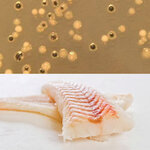Technology

If you're riding a bike at Copenhagen's November 2009 U.N. Climate Change Conference, you may be able to take advantage of some new 'Smart Biking' techology created by MIT - it will help you make friends with people you pass and even tells you how much CO2 you didn't use by taking a bike(1).
MIT researchers unveiled the project today called Smart Biking, aimed at transforming bicycle use in Denmark’s largest city, promoting urban sustainability and building new connections between the city’s cyclists.
The project utilizes a self-organizing 'smart-tag' system that will allow the city’s…

A research team at Singapore A*STAR's Data Storage Institute (DSI) has invented a new phase change material that has the potential to change the design of future memory storage devices.
Phase change materials are substances that are capable of changing their structure between amorphous and crystalline at high speed. Currently, these materials are used to make Phase change memory (PCM), the most promising alternative to replace FLASH memory.
This research advance was given special mention in Nature's Asia Materials journal. In the August issue of Nature Photonics journal, the creation of a…
Superconductors are materials that conduct current with negligible resistance and reduced energy waste so research has always generated enormous interest.
Magne Runde and Niklas Magnusson at SINTEF Energy Research are testing superconductors in the huge induction heaters utilized by the aluminium industry. Currently, companies have to preheat huge aluminium cylinders, known as billets, in induction heaters with copper conductors. When the temperature reaches 500 °C, the billet is extruded to profiles.
“This heating process leads to large losses in energy,” says Runde. “Only half the energy…

Joseph DeRisi is a young scientist who at age 39 has already racked up some amazing career achievements. He tells about his new DNA chip for detecting viruses:
My colleague Dave Wang and I were sitting around the office one day in 2000 asking, “How were viruses discovered in the past?”
We knew that it had always been a laborious and time-consuming effort. When an epidemic struck, what researchers generally did was go to electron microscopes and try to figure out what they were seeing. Sometimes, it took 10, 20 years to find a virus they knew had to be in there.
Earlier, when I was a Stanford…

If you’re thinking about which hybrid vehicle to purchase, now that gas prices have dictated that you replace your Hummer, consider a vehicle that will not only eliminate high spending at the gas pump, but also your time spent in traffic. Wouldn’t you rather fly above the endless traffic jams in your very own ethanol-fueled flying car? I know I would.
Science fiction, right? Guess again. Welcome to Moller Int., a small company nestled in the unassuming city of Davis, CA, where they are making this science fantasy into cold hard reality via the M400 Skycar, a 'volantor' sky vehicle. Volantor…

After several years of research and development on the promising idea of an intelligent writing tool for correcting and enhancing a user's text, WhiteSmoke 2009 says thet can deliver it. Featuring a grammar checking engine that detects a wider range of errors than any other commercial grammar checker, and a range of other tools to create an all-in-one writing solution, WhiteSmoke 2009 says it is the ideal software application for writers, copy editors and at-home Internet users who are concerned with creating error-free texts.
Community is the Key
"The real secret behind WhiteSmoke's…

Paleontologist Sankar Chatterjee of Texas Tech University, aeronautical engineer Rick Lind of the University of Florida, and their students Andy Gedeon and Brian Roberts have reached back in time 115 million years to one of the most successful flying creatures in Earth’s history, the pterodactyl, to conjure a robotic spy plane with next-generation capabilities.
Mimicking the physical and biological characteristics of the Early Cretaceous Brazilian pterosaur Tapejara wellnhoferi -- skin, blood vessels, muscles, tendons, nerves, cranial plate, skeletal structure, and more -- the scientists are…

Rigid television screens, bulky laptops and still image posters are one step close to being a thing of the past.
New research published by researchers from Sony and the Max Planck Institute in the New Journal of Physics demonstrate the possibility of bendable optically assessed organic light emitting displays for the first time, based on red or IR-A light upconversion.
The research makes feasible the design of computers that can be folded up and put in your pocket, the mass-production of moving image posters for display advertising, televisions which can be bended to view or, even,…

The Captain can't freeze smelly fish that's past its best - and Icelandic scientists can now help him out by detecting the levels of stench-making bacteria faster than ever before.
The research in the Royal Society of Chemistry's Journal of Environmental Monitoring reports a new method to detect bacteria that break down dead fish and produce the distasteful smell of rotting fish. It opens the door to a standard of quality control even higher and speedier than the finely-tuned nose of the bushy-bearded Birdseye.
Using a technique based on the polymerase chain reaction (PCR), Eyjófur Reynisson…

With one of the most aggressive submarine cable builds in the world now complete, the first phase of the Trans-Pacific Express submarine cable system directly connecting Mainland China, the United States, South Korea and Taiwan is ready for service. The 18,000 kilometer (more than 11,000 mile) fiber-optic undersea cable will play a significant role in driving new development for international telecommunications in the Asia-Pacific region.
Originally announced as a 5.12 terabit system in December 2006, the cable system has increased in capacity, and when fully deployed when phase two is…